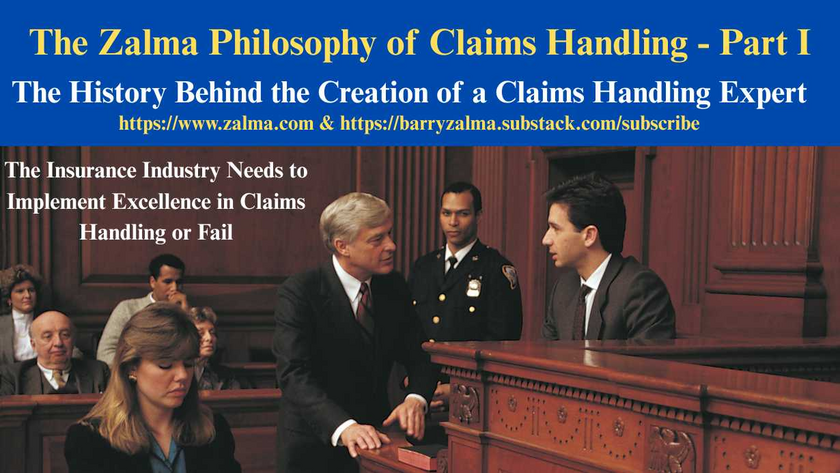
Contract That Required $3 Million in Coverage Was All The Indemnity it Must Pay in the Event of Loss
Read the full article at https://www.linkedin.com/pulse/you-only-get-what-ask-barry-zalma-esq-cfe and at https://zalma.com/blog plus more than 4100 posts.
Posted on February 24, 2022 by Barry Zalma
The Texas Oilfield Anti-Indemnity Act (“TOAIA”) voids indemnity agreements that pertain to wells for oil, gas, or water or to mineral mines, unless the indemnity agreement is supported by, inter alia, liability insurance. Here, pursuant to TOAIA, CP Well Testing, LLC and Cimarex Energy Co. agreed in a Master Service Agreement (the “MSA”) to obtain a minimum amount of insurance coverage to indemnify one another. In Cimarex Energy Company; St. Paul Fire & Marine Insurance Company, as Subrogees of Cimarex Energy Company; American Guarantee & Liability Insurance Company, as Subrogees of Cimarex Energy Company v. CP Well Testing, L.L.C., No. 20-50892, United States Court of Appeals, Fifth Circuit (February 14, 2022) when a party bought more insurance protection than required by the contract it, and its insurer, refused to pay more than the amount required by the contract.
After an accident, Cimarex settled with the injured party for an amount above the minimum indemnity required by the MSA. In the wake of that settlement, a dispute arose between CP Well and Cimarex over CP Well’s indemnification obligation. At issue is how much insurance CP Well obtained for the benefit of the other party as indemnitee. The district court considered the terms of CP Well’s insurance policy to answer that question and granted summary judgment for CP Well based on the court’s conclusion that CP Well owed Cimarex no further indemnity beyond the MSA’s minimum.
FACTS
In 2010, CP Well and Cimarex entered into the MSA. Thereafter, Cimarex hired CP Well to work at an oil well in Oklahoma that was owned and operated by Cimarex. CP Well assigned Johnny Trent, an employee of one of its subcontractors, to work at the well. On April 25, 2015, a flash fire occurred at the well and Trent was severely burned.
Trent sued Cimarex, CP Well, and Cudd Energy Services, Inc. in Oklahoma state court for his injuries. Cimarex and its insurers, St. Paul Fire & Marine Insurance Company and American Guarantee & Liability Insurance Company, (collectively “Cimarex”) settled the underlying lawsuit with Trent for $4.5 million.
After the Trent settlement, Cimarex sought indemnity from CP Well. CP Well paid Cimarex $3 million, the minimum amount of insurance required by the MSA but it refused to indemnify Cimarex for the remaining $1.5 million.
The district court concluded that in the MSA, “the parties merely agreed to a floor” of indemnity insurance that CP Well agreed to obtain-general liability coverage of $1 million and excess liability coverage of at least $2 million-and did not set a specific level of coverage. Because the MSA does not limit the amount of coverage the parties agreed to obtain to support their indemnity obligations, the court then looked to TOAIA to determine the lowest common denominator of insurance coverage between the parties.
CP Well averred it only agreed to maintain $1 million in general liability insurance and $2 million in excess liability insurance to meet its indemnification obligation under the MSA. It claimed the remaining coverage in its excess liability coverage was thus not for the benefit of Cimarex.
The district court held that CP Well did not breach the MSA because CP Well was only required to indemnify Cimarex up to $3 million. Consequently, the district court granted CP Well summary judgment and denied Cimarex’s competing motion.
DISCUSSION
In Texas, contract terms are given their plain, ordinary, and generally accepted meanings unless the contract itself shows them to be used in a technical or different sense. The floor for each party was different: CP Well was required to obtain a minimum of $3 million in coverage. Cimarex was required to obtain a minimum of $26 million in total coverage. The language of the MSA is plain as far as what the parties were required to do. When CP Well obtained its $10 million policy, it clearly met the $3 million minimum coverage specified in the MSA and thus complied with its indemnity obligation under the agreement.
The MSA set the floor, not the ceiling of required insurance. While CP Well was free to obtain more than $3 million in liability coverage, voluntarily increasing its indemnification coverage for Cimarex’s benefit, it was not required by the MSA to do so.
The statute states that, “[w]ith respect to a mutual indemnity obligation, the indemnity obligation is limited to the extent of the coverage and dollar limits of insurance . . . each party as indemnitor has agreed to obtain for the benefit of the other party as indemnitee.” [Tex. Civ. Prac. & Rem. Code Ann. § 127.005(b).] The district court consulted CP Well’s excess liability policy language and concluded that none of the additional coverage was procured for Cimarex’s benefit as indemnitee, and therefore that CP Well was not required to pay more than $3 million to Cimarex.
The district court’s approach was not just logical; it was consistent with precedent that, applying Texas law, courts in this circuit routinely consider the terms of insurance policies to determine whether a party is entitled to coverage.
CP Well’s excess liability policy effectively set the indemnity coverage “ceiling” at the same level as the MSA’s “floor” by the wording of the policy. In TOAIA’s terminology, the remaining $8 million of CP Well’s excess liability coverage was not obtained for the benefit of Cimarex. CP Well was free to obtain additional coverage for its own purposes. CP Well’s excess liability policy fulfilled both the terms of the MSA and the requirements of TOAIA, to the extent that CP Well and Cimarex were mutually indemnified up to $3 million, coincident with CP Well’s minimum requirements under the MSA. Had Cimarex wanted CP Well to obtain more than the minimum coverage in the MSA, the parties could have so fashioned their agreement. The MSA was clear: Cimarex could expect nothing beyond the minimum coverage CP Well was required to obtain.
The parties in this case agreed to indemnify each other, consistent with TOAIA, by setting a “floor” of required insurance coverage each was to obtain. They were free to procure more. CP Well obtained a policy that expressly set the “ceiling” of coverage “for the benefit [of Cimarex] as indemnitee” at the minimum “floor” provided by the parties’ contract.
CP Well did not breach its contractual duties to Cimarex in doing so. And the district court did not err in construing either the parties’ agreement, or TOAIA, or the insurance policy to delimit CP Well’s indemnity obligation to Cimarex. It follows that the district court’s summary judgment in favor of CP Well was proper.
ZALMA OPINION
The parties entered into the MSA to avoid the consequences of the anti-indemnity statute. They drafted the contract with both parties promising to buy insurance that would be available to indemnify the other. For some reason one was only required to carry $3 million in coverage and the other was required to maintain $26 million. Just because one was prudent enough to protect itself and buy more than required did not change the terms of the contract and the minimum requirement was also the maximum. The Fifth Circuit interpreted the clear and unambiguous language of the contract and the insurance policies and enforced the contract exactly as the parties agreed.
© 2022 – Barry Zalma
Barry Zalma, Esq., CFE, now limits his practice to service as an insurance consultant specializing in insurance coverage, insurance claims handling, insurance bad faith and insurance fraud almost equally for insurers and policyholders.
He practiced law in California for more than 44 years as an insurance coverage and claims handling lawyer and more than 54 years in the insurance business.
You can contact Mr. Zalma at https://www.zalma.com, https://www.claimschool.com, [email protected] and [email protected] . Mr. Zalma is the first recipient of the first annual Claims Magazine/ACE Legend Award.
You may find interesting the podcast “Zalma On Insurance” at https://anchor.fm/barry-zalma; you can follow Mr. Zalma on Twitter at; you should see Barry Zalma’s videos on https://www.youtube.com/channel/UCysiZklEtxZsSF9DfC0Expg/featured; or videos on https://rumble.com/zalma. Go to the Insurance Claims Library – https://zalma.com/blog/insurance-claims–library/ The last two issues of ZIFL are available at https://zalma.com/zalmas-insurance-fraud-letter-2/
Insurer’s Exclusion for Claims of Assault & Battery is Effective
Post 5250
Read the full article at https://lnkd.in/gBzt2vw9, see the video at https://lnkd.in/gEBBE-e6 and at https://lnkd.in/gk7EcVn9, and at https://zalma.com/blog plus more than 5250 posts.
Bar Fight With Security is an Excluded Assault & Battery
In The Cincinnati Specialty Underwriters Insurance Company v. Mainline Private Security, LLC, et al., Civil Action No. 24-3871, United States District Court, E.D. Pennsylvania (December 16, 2025) two violent attacks occurred in Philadelphia involving young men, Eric Pope (who died) and Rishabh Abhyankar (who suffered catastrophic injuries). Both incidents involved security guards provided by Mainline Private Security, LLC (“Mainline”) at local bars. The estates of the victims sued the attackers, the bars, and Mainline for negligence and assault/battery. The insurer exhausted a special limit and then denied defense or indemnity to Mainline Private Security.
INSURANCE COVERAGE
Mainline had purchased a commercial ...
Marine Insurer May Dispose of Vessel to Avoid Waste
Post 5249
Read the full article at https://lnkd.in/gfn_UHdp, see the video at https://lnkd.in/gDWVccnr and at https://lnkd.in/gv9nsBqk, and https://zalma.com/blog plus more than 5200 posts.
In Western World Insurance Company v. The Estate Of Shawn Arsenault, No. 25-cv-13413-PGL, United States District Court, D. Massachusetts (December 17, 2025) the USDC was asked to resolve a marine insurance dispute after the sinking of the F/V Seahorse, a commercial fishing vessel, off Cape Cod on June 8, 2025. The vessel’s owner and operator, Shawn Arsenault, died in the incident.
Western World Insurance Company issued a hull insurance policy for the vessel. With no personal representative yet appointed for the estate, the insurer cannot determine the proper payee for the insurance proceeds.
The insurer paid for the vessel’s recovery and removal, and the vessel is now with a salvage company, incurring substantial storage fees. The insurer determined the loss is covered under the ...
Marine Insurer May Dispose of Vessel to Avoid Waste
Post 5249
Read the full article at https://lnkd.in/gfn_UHdp, see the video at https://lnkd.in/gDWVccnr and at https://lnkd.in/gv9nsBqk, and https://zalma.com/blog plus more than 5200 posts.
In Western World Insurance Company v. The Estate Of Shawn Arsenault, No. 25-cv-13413-PGL, United States District Court, D. Massachusetts (December 17, 2025) the USDC was asked to resolve a marine insurance dispute after the sinking of the F/V Seahorse, a commercial fishing vessel, off Cape Cod on June 8, 2025. The vessel’s owner and operator, Shawn Arsenault, died in the incident.
Western World Insurance Company issued a hull insurance policy for the vessel. With no personal representative yet appointed for the estate, the insurer cannot determine the proper payee for the insurance proceeds.
The insurer paid for the vessel’s recovery and removal, and the vessel is now with a salvage company, incurring substantial storage fees. The insurer determined the loss is covered under the ...
Zalma’s Insurance Fraud Letter
Read the full article at https://lnkd.in/dG829BF6; see the video at https://lnkd.in/dyCggZMZ and at https://lnkd.in/d6a9QdDd.
ZIFL Volume 29, Issue 24
Subscribe to the e-mail Version of ZIFL, it’s Free! https://visitor.r20.constantcontact.com/manage/optin?v=001Gb86hroKqEYVdo-PWnMUkcitKvwMc3HNWiyrn6jw8ERzpnmgU_oNjTrm1U1YGZ7_ay4AZ7_mCLQBKsXokYWFyD_Xo_zMFYUMovVTCgTAs7liC1eR4LsDBrk2zBNDMBPp7Bq0VeAA-SNvk6xgrgl8dNR0BjCMTm_gE7bAycDEHwRXFAoyVjSABkXPPaG2Jb3SEvkeZXRXPDs%3D
Zalma’s Insurance Fraud Letter (ZIFL) continues its 29th year of publication dedicated to those involved in reducing the effect of insurance fraud. ZIFL is published 24 times a year by ClaimSchool and is written by Barry Zalma. It is provided FREE to anyone who visits the site at http://zalma.com/zalmas-insurance-fraud-letter-2/
Zalma’s Insurance Fraud Letter
Merry Christmas & Happy Hannukah
Read the following Articles from the December 15, 2025 issue:
Read the full 19 page issue of ZIFL at ...
The Professional Claims Handler
Post 5219
Posted on October 31, 2025 by Barry Zalma
An Insurance claims professionals should be a person who:
Can read and understand the insurance policies issued by the insurer.
Understands the promises made by the policy.
Understand their obligation, as an insurer’s claims staff, to fulfill the promises made.
Are competent investigators.
Have empathy and recognize the difference between empathy and sympathy.
Understand medicine relating to traumatic injuries and are sufficiently versed in tort law to deal with lawyers as equals.
Understand how to repair damage to real and personal property and the value of the repairs or the property.
Understand how to negotiate a fair and reasonable settlement with the insured that is fair and reasonable to both the insured and the insurer.
How to Create Claims Professionals
To avoid fraudulent claims, claims of breach of contract, bad faith, punitive damages, unresolved losses, and to make a profit, insurers ...

The History Behind the Creation of a Claims Handling Expert
The Insurance Industry Needs to Implement Excellence in Claims Handling or Fail
Post 5210
This is a change from my normal blog postings. It is my attempt. in more than one post, to explain the need for professional claims representatives who comply with the basic custom and practice of the insurance industry. This statement of my philosophy on claims handling starts with my history as a claims adjuster, insurance defense and coverage lawyer and insurance claims handling expert.
My Training to be an Insurance Claims Adjuster
When I was discharged from the US Army in 1967 I was hired as an insurance adjuster trainee by a professional and well respected insurance company. The insurer took a chance on me because I had been an Army Intelligence Investigator for my three years in the military and could use that training and experience to be a basis to become a professional insurance adjuster.
I was initially sat at a desk reading a text-book on insurance ...














